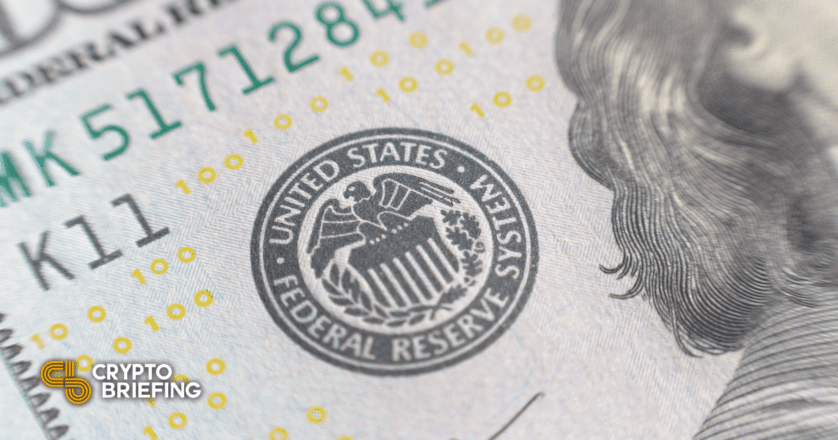Opinion: As the Fed Tightens, VCs Are Spending Big on Crypto
The Fed is starting to sell back bonds onto the market but venture capital firms remain undeterred.

Share this article
The Fed’s Quantitative tightening will make it difficult for risk-on assets like cryptocurrencies to shine. But at the same time, money from venture capital firms keeps pouring into the space.
The Fed Starts Quantitative Tightening
Despite a strong start to April, the bullish momentum in the crypto market has definitely cooled off. Last week’s FOMC minutes put a damper on Bitcoin’s recent rally even after Mayor Francis Suarez unveiled a snazzy new cyber “charging bull” at the Bitcoin 2022 conference in Miami. Since then we’ve descended further, tentatively finding support and bouncing from around $39,400.
With consumer price index data slated to reveal another month of record-breaking inflation, the gist from the Fed is that the prospects for the U.S. stock market aren’t looking so great. In a bid to offset the rampant inflation caused partly by the economic response to Covid-19, and party by commodity supply shocks triggered by Russia’s invasion of Ukraine, the Fed now needs to unwind its balance sheet comprising mainly of bonds and mortgage-backed securities. This process is known as quantitative tightening, which, grossly oversimplified, means the Fed is trying to suck money out of the economy.
It plans to do this by selling off $95 billion worth of assets every month to meet its projected targets. But that’s just the tip of the iceberg—the Fed is currently sitting on a whopping $9 trillion worth of assets. Although a good chunk of this is bonds that will expire to maturity over the next few years, the total amount is still substantially larger than the $4.5 trillion the Fed held the last time it implemented quantitative tightening in 2017.
Selling bonds back to the market aims to decrease their price and increase their yields (bond prices and yields are inversely correlated), which means that borrowing becomes more expensive and, since all money is born as debt, money becomes scarcer. Less money in the economy means less demand for goods and services, which should, in theory, suppress inflation, but also less speculating and investing, which is bad for risk-on assets like stonks and crypto.
Another key takeaway from the FOMC minutes is that the Fed is considering selling mortgage-backed securities for the first time as part of its tightening regime. Like the unprecedentedly high asset unwinding that needs to take place, an MBS sale could also have an yet unknown disruptive effect on the U.S. economy. Markets can handle positive or negative sentiment, but things can get scary when the outlook becomes hard to predict.
That all sounds pretty bleak, and it might end up being so for traditional markets. However, you can barely believe the bearish macroeconomic outlook with so much money continually pouring into crypto. As the Fed ruminates about raising rates and selling assets, venture capital firms throw money around like they print the stuff.
Last week saw Axie Infinity developer Sky Mavis rake in $150 million, NEAR Protocol $350 million, and Binance.US a cool $200 million at a $4.5 billion valuation. The list of those investing contains all the usual suspects: Andreessen Horowitz, Tiger Global, Paradigm, and even contributions from “TradFi” firms like VanEck.
So what can we make of this? On the one hand, the Fed’s comments imply hard times ahead, but on the other, VCs appear fearless about investing in crypto. To me, one explanation comes to mind. While the short to medium-term macro environment will likely keep things turbulent, investment firms believe it won’t be bad enough to do any serious damage. A lot of crypto investors, especially the institutional ones, will be thinking on longer-term time horizons. At the end of the day, there’s no sense in passing up what they believe is a great long-term investment opportunity because of some temporary quantitative tightening.
Disclosure: At the time of writing this feature, the author owned ETH, and several other cryptocurrencies.
